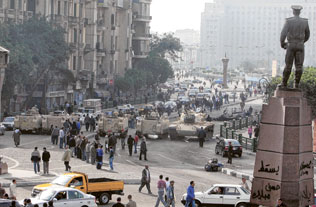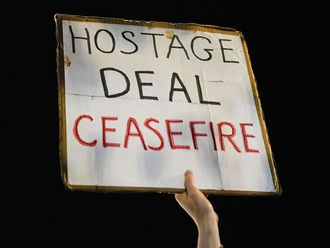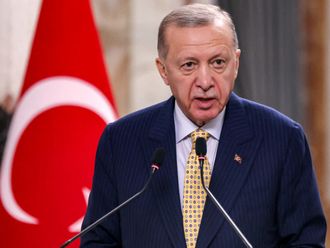
Cairo: Cairo's Tahrir Square, the site of eight consecutive days of protests aimed at forcing Egyptian President Hosni Mubarak to resign, has been host to several public demonstrations since it was built in the 19th century.
The square, known as Midan Ismailia before the leaders of the revolution of 1952 renamed it Tahrir, or Liberation, Square, was the focal point of riots in 1977 that were sparked when President Anwar Sadat announced the government was ending subsidies on basic foodstuffs such as bread and cooking oil.
The square was also the site of demonstrations in 1881 against the ruling Khedive Tawfik and in 1919 against British occupation.
"Its importance is due to its size and its closeness to vital sovereign institutions and embassies," said Obada Kohela, a professor of history at Cairo University. "This is the first popular revolt against an Egyptian ruler."
In 2003, the square, which holds the former main campus of the American University in Cairo and the Mogama, the centre of government administration in Egypt, hosted demonstrations against the war in Iraq.
The most recent protests that started on January 25 have seen thousands of Egyptians gather to call for end to the rule of Mubarak.











